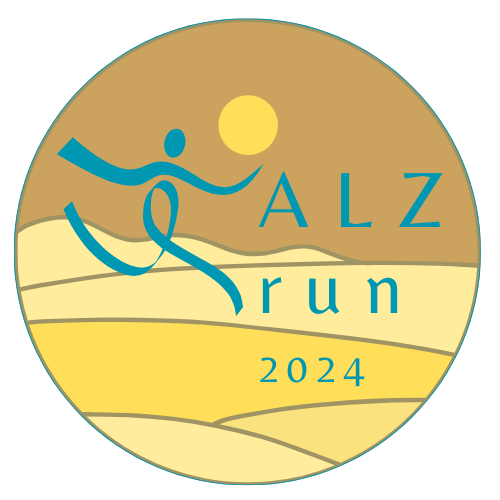
AlzRun 2024: What I Carried…
Do-it-all Running Vest
See Instagram reel for 90 second timelapse of packing.
I got lucky: Inov8—my favorite trail running shoe brand—donated* a RacePac-20 20 liter running vest to AlzRun. This one pack easily handled all my storage needs, even on my longest days in the most remote settings with worrisome forecasts. And yet it was super light (12oz/340g), comfortable, and compressed down for minimal needs of suburban trails. So my packing routine stayed the same.
The pack had ideal storage options for organization and access, and was easy to synch down to no-bounce snugness.
*Inov8 also donated their grippy/comfy/lightweight/well-draining Trailfly Ultra G 280s trail shoes. Never a hotspot, and so comfortable that I was in no rush to take them off, even after 10 hours of running and dozens of stream crossings.
Full vest, with maximal emergency gear, carried fluid, and cold-weather kit, weighed about 16lbs (7kg).
“Nutrition”
I had a huge bin in my car that had jumbo packs of snacks from Costco. These were my goto snacks that I never tired of and gave me good-enough variety throughout a long day.
2L bladder orange juice (917 calories)
or two 600ml flasks of orange juice (550 calories)
Two packs of oreos (2x673=1,346 calories)
Bag peanut butter pretzels: (1,200 calories)
Bag goldfish (840 calories)
Bag milanos (1,120 calories)
TOTAL: 5,433 calories
Snacks mostly contained in ziplock in the main compartment, but I’d start with a bag in each of my (huge) shorts pockets.
At night post-run and the entire next travel/work day I ate huge amounts of (vegetarian) protein, carbs, and fluids.
Hydration
I didn’t have time on the road to research current status of seasonal water sources. Much of the country was in drought conditions, and in late summer I couldn’t count on getting lucky. Routes in a few states had no water at all.
So I only relied on sure-thing water sources when planning what to carry. Generally, my preference for filtering water is soft flasks with filter caps that I carried in my front vest pouches. But for most runs I needed to carry more fluid.
When water sources were scarce, I’d start the day with a 2 liter bladder of orange juice, which I never tired of. And it provided a nice kick of 900+ calories over a morning.
Even with ample water sources and no need for the bladder, I’d still start off with soft flasks of OJ, storing filter caps in the net in back of the pack for later use.
In rare cases where I expected water might not be scoopable with my softflask or clogged with algae, I’d instead carried an ultralight pump filter that worked well in those settings.
Electronics
I had a workable system for charging electronics on my chaotic travel days. While running I carried electronics in varous pockets of my Racepac20, but immediately post-run I’d put them all in a bin that also held a powerstrip and needed chargers. When I found a workspace the next day, I’d plug them all in, still in the bin.
I’d load my pack from the bin the following morning for my next run.
Phone (primary navitation with downloaded GaiaGPS)
Garmin Inreach Mini2 satellite tracker
Garmin GPS watch
GoPro Hero 10 action camera
Choice of headlamps: Fenix HM65R-DT or Petzl IKO Core
Battery charger and cable
GoPro backup battery and microSD
Optional Clothing
Usually in the evening post-run, I’d turn my attention to the next run, checking out big issues like road and trail closures (there were several), where to stop along my travel route to sleep in my car, and weather forecasts.
My interest in the weather was to know the extremes I should be prepared for, including the following night should I be partially or fully incapacitated in a remote setting. I always had clothing/gear to get me through the next night safely.
When packing for each run, I’d start by grabbing what clothing I needed for the extremes. Items like a waterproof or windproof shell, a fleece, a winter hat, mittens, cooling buff, or even a light down puffy. These would go in the bottom of my pack, as I didn’t need easy access to them and they distributed the load in my main pack pouch optimally. My running kit was otherwise the same each day.
Optional Kit
Didn’t carry but applied beforehand
sun lotion
permethrin for ticks/mosquitoes
Skin care, if needed (rare)
Carried when needed
bear spray (if in grizzly or nighttime cougar habitat)
bug headnet (never needed—carried a few time when bugs were notorious)
mylar blanket
mylar bivy sack (if remote and potential cold night)
fleece, winter hat, rain coat, wind shell
trekking poles (only carried/used when anticipated high-flow stream crossings, choice of front or back storage)
Sunglasses, tucked over shirt neck.
Headlamp choice: Super-bright lamp if technical terrain or apex predators after dark. Ultralight option otherwise.
First Aid Kit
An ultralight commercial wilderness first aid kit with the following upgrades, as per NOLS Wilderness First Responder training (highy recommended!)
roll of athletic tape and small amount of Leukotape
trauma shears
Nitrile protective gloves
12cc syringe for wound cleaning
high quality tweezers (for big and small cacti spines)
bigger ace bandage
tylenol, ibuprofen, and aspirin
Pen and index card for notes
Occlusive dressing for pneumothorax care
Everyday clothes
Inov8 Performance Short Sleeve T-Shirt*
Inov8 Train Light 9” Shorts*
Inov8 Merino Mid Sock
* donated to AlzRun by Inov8








